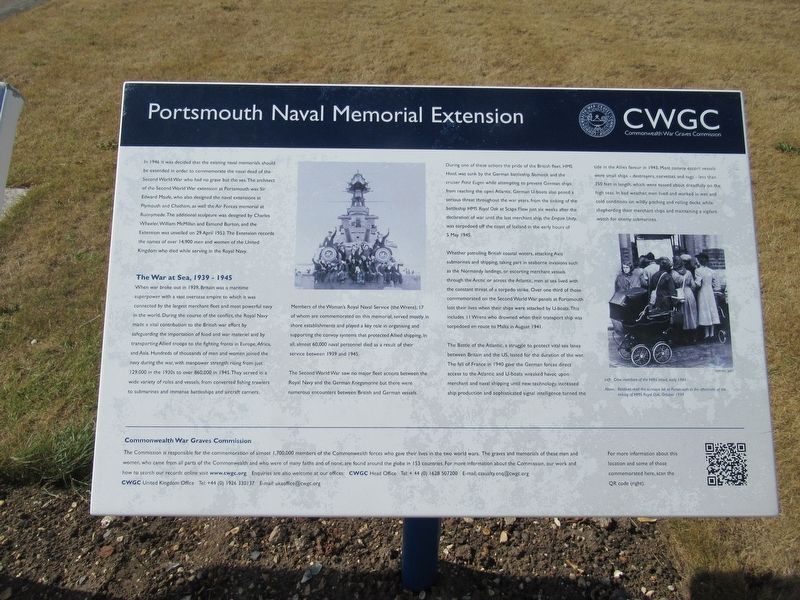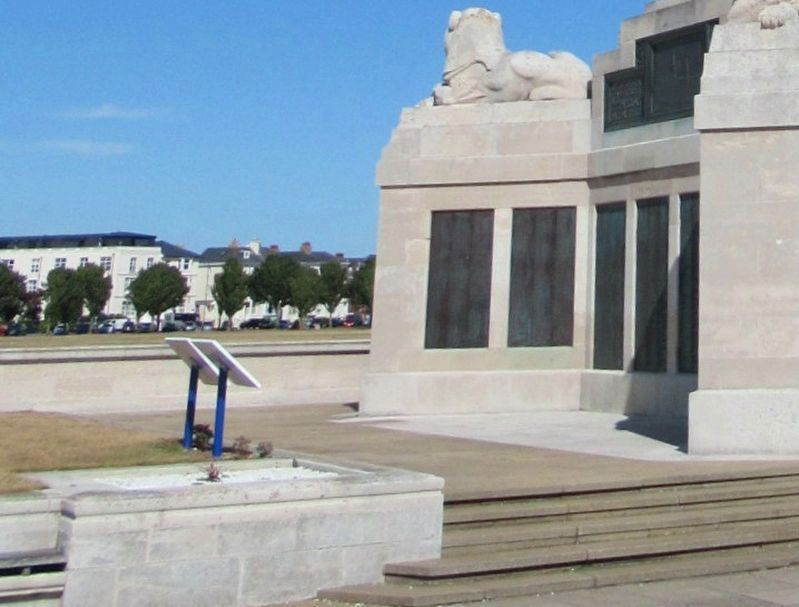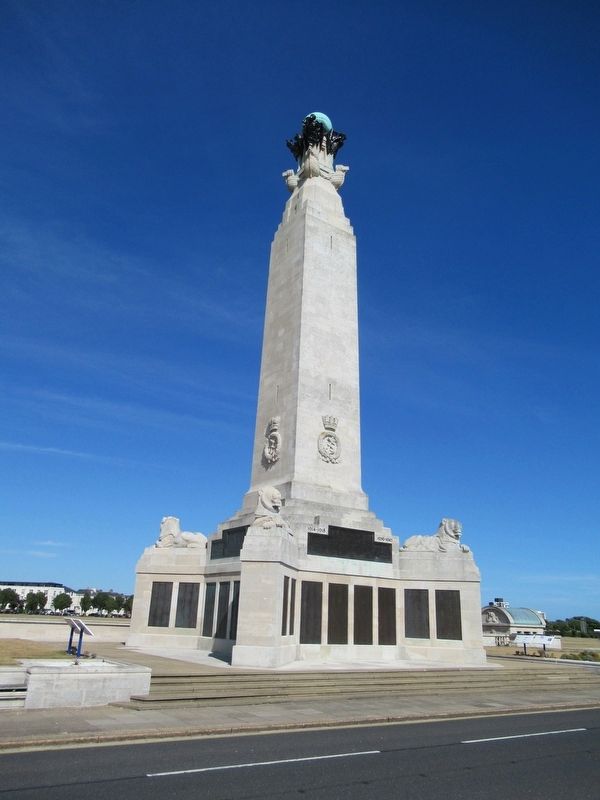Portsmouth, England, United Kingdom — Northwestern Europe (the British Isles)
Portsmouth Naval Memorial Extension
In 1946 it was decided that the existing naval memorials should be extended in order to commemorate the naval dead of the Second World War who had no grave but the sea. The architect of the Second World War extension at Portsmouth was Sir Edward Maufe, who also designed the naval extensions at Plymouth and Chatham, as well the Air Forces memorial at Runnymede. The additional sculpture was designed by Charles Wheeler William McMillan and Esmond Burton, and the Extension was unveiled on 29 April 1953. The Extension records the names of over 14,900 men and women of the United Kingdom who died while serving in the Royal Navy.
The War at Sea, 1939 1945 When war broke out in 1939, Britain was a maritime superpower with a vast overseas empire to which it was connected by the largest merchant fleet and most powerful navy in the world. During the course of the conflict, the Royal Navy made a vital contribution to the British war effort by safeguarding the importation of food and war materiel and by transporting Allied troops to the fighting fronts in Europe, Africa, and Asia. Hundreds of thousands of men and women joined the navy during the war, with manpower strength rising from just 129.000 in the 1930s to over 860,000 in 1945. They served in a wide variety of roles and vessels, from converted fishing trawlers to submarines and immense battleships and aircraft carriers.
Members of the Woman's Royal Naval Service (the Wrens), 17 of whom are commemorated on this memorial, served mostly in shore establishments and played a key role in organising and supporting the convoy systems that protected Allied shipping. In all, almost 60,000 naval personnel died as a result of their service between 1939 and 1945.
The Second World War saw no major fleet actions between the Royal Navy and the German Kriegsmarine but there were numerous encounters between British and German vessels.
During one of these actions the pride of the British fleet, HMS Hood, was sunk by the German battleship Bismarck and the cruiser Prinz Eugen while attempting to prevent German ships from reaching the open Atlantic. German U-boats also posed a serious threat throughout the war years. from the sinking of the battleship HMS Royal Oak at Scapa Flow just six weeks after the declaration of war until the last merchant ship, the Empire Unity. was torpedoed off the coast of Iceland in the early hours of 5 May 1945.
Whether patrolling British coastal waters, attacking Axis submarines and shipping, taking part in seaborne invasions such as the Normandy landings, or escorting merchant vessels through the Arctic or across the Atlantic, men at sea lived with the constant threat of a torpedo strike. Over one third of those commemorated on the Second World War panels at Portsmouth lost their lives when their ships were attacked by U-boats. This includes II Wrens who drowned when their transport ship was torpedoed en route to Malta in August 1941.
The Battle of the Atlantic, a struggle to protect vital sea lanes between Britain and the US, lasted for the duration of the war. The fall of France in 1940 gave the German forces direct access to the Atlantic and U-boats wreaked havoc upon merchant and naval shipping until new technology, increased ship production and sophisticated signal intelligence turned the tide in the Allies favour in 1943. Most convoy escort vessels were small ships - destroyers, corvettes and tugs less than 350 feet in length, which were tossed about dreadfully on the high seas. In bad weather, men lived and worked in wet and cold conditions on wildly pitching and rolling decks while shepherding their merchant ships and maintaining a vigilant watch for enemy submarines.
Commonwealth War Graves Commission
The Commission is responsible for the commemoration of almost 1,700,000 members of the Commonwealth forces who gave their lives in the two world wars. The graves and memorials of these men and women, who came from all parts of the Commonwealth and who were of many faiths and of none, are found around the globe in 153 countries. For more information about the Commission, our work and how to search our records online visit www.cwgc.org Enquiries are also welcome at our offices: CWGC Head Office Tel:+ 44 (0) 1628 507200 E-mail: [email protected] CWGC United Kingdom Office Tel: +44 (0) 1926 330137 E-mail: [email protected]
Topics and series. This memorial is listed in these topic lists: War, World II • Waterways & Vessels. In addition, it is included in the Lost at Sea series list.
Location. 50° 46.949′ N, 1° 5.755′ W. Marker is in Portsmouth, England. Memorial is at the intersection of Clarence Esplanade and Serpentine Road, on the right when traveling north on Clarence Esplanade. Touch for map. Marker is in this post office area: Portsmouth, England PO5 3LJ, United Kingdom. Touch for directions.
Other nearby markers. At least 8 other markers are within walking distance of this marker. A different marker also named Portsmouth Naval Memorial Extension (here, next to this marker); Portsmouth Naval Memorial (a few steps from this marker); a different marker also named The Portsmouth Naval Memorial (a few steps from this marker); a different marker also named Portsmouth Naval Memorial (a few steps from this marker); a different marker also named Portsmouth Naval Memorial (a few steps from this marker); HMS Aboukir Yellow Fever Memorial (within shouting distance of this marker); Portsmouth Crimean War Memorial (approx. 0.2 kilometers away); Indian Mutiny - HMS Shannon Memorial (approx. 0.3 kilometers away). Touch for a list and map of all markers in Portsmouth.
Credits. This page was last revised on January 27, 2022. It was originally submitted on September 19, 2018, by Michael Herrick of Southbury, Connecticut. This page has been viewed 119 times since then and 13 times this year. Photos: 1, 2, 3. submitted on September 19, 2018, by Michael Herrick of Southbury, Connecticut.


